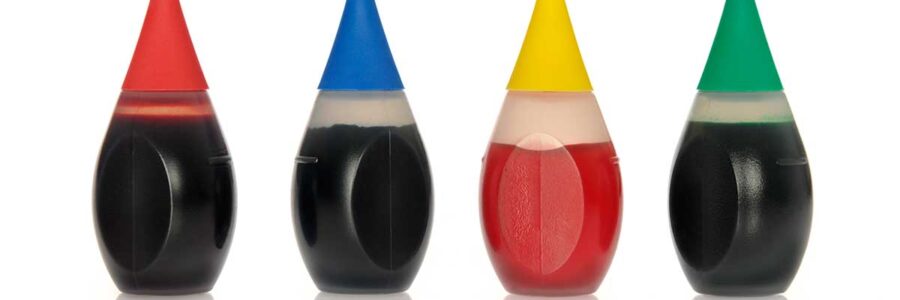Brightly colored cereals, candies, and beverages are familiar on grocery store shelves, but their vibrant hues often come at a hidden cost. Artificial food dyes, such as Red #3, Red #40, Yellow #5, and Yellow #6, are widely used in processed foods despite growing evidence of their health risks. As the FDA considers banning these harmful additives in 2025, a long-overdue shift in food safety and quality may finally be on the horizon. This change can reshape how we think about food and its impact on our health.
The Health Risks of Artificial Food Dyes
Artificial food dyes are synthetic chemicals added to enhance the visual appeal of processed foods. While their bright colors may catch the eye, their health implications are alarming. Research has linked food dyes to a range of health issues, including hyperactivity, attention deficits, and behavioral changes in children.[1]
Red #3, in particular, has been flagged for its carcinogenic potential, yet it continues to be used in many candies and baked goods.[2] Additionally, Yellow #5 and Yellow #6 have been associated with allergic reactions and adverse behavioral effects.[3] Despite these risks, many dyes have not undergone comprehensive safety evaluations in years, exposing consumers to potentially harmful chemicals.
A Global Perspective on Food Dye Regulation
The U.S. lags behind many other countries in regulating artificial food dyes. The European Union, for example, has banned or restricted numerous synthetic dyes, opting instead for natural alternatives like beetroot powder, turmeric, and spirulina. While these natural dyes may not produce the same intensity of color, they prioritize consumer safety over aesthetic appeal. The regulatory gap between the U.S. and other nations highlights the urgent need for action to protect public health and align with international standards.[4]
Why These Dyes Persist in the Food Supply
The U.S.’s continued use of artificial food dyes can be attributed to industry inertia and outdated regulations. Synthetic dyes are cheap, stable, and easy to produce, making them appealing to manufacturers. However, their convenience comes at a significant cost to consumer health. The FDA’s potential ban represents a long-overdue acknowledgment of these risks and a critical step toward creating a safer food environment.
The Broader Implications of Artificial Dyes
The health concerns associated with artificial food dyes extend beyond their immediate effects. These additives contribute to a larger pattern of chemical exposure that burdens the body’s detoxification systems and increases the risk of chronic diseases. The impact can be particularly severe for children, who are among the most frequent consumers of dye-laden products. Parents often report improvements in behavior and focus when artificial dyes are removed from their children’s diets, highlighting the tangible benefits of avoiding these chemicals. Beyond individual health, artificial dyes undermine trust in the food system, raising questions about the prioritization of profit over safety.
Real Food as a Solution
The potential FDA bans offer an opportunity to shift away from synthetic additives and toward real food. Natural alternatives to artificial dyes reduce health risks and promote a deeper connection to the quality and origin of our food. Free from unnecessary chemicals, real food supports overall well-being and aligns with the body’s natural processes. By choosing products made with natural ingredients, consumers can actively drive demand for healthier options.
What’s Next for the Food Industry?
Manufacturers must reformulate their products if the FDA moves forward with banning harmful food dyes. While this may pose short-term challenges, it also presents an opportunity for innovation. Advances in natural dye technology and increased consumer demand for clean-label products will likely shape the next generation of food offerings. Public pressure will ensure these changes are implemented effectively and that the food industry prioritizes safety and transparency.
A Collective Responsibility for Change
Eliminating artificial food dyes is not just about protecting individual health—it’s about creating a healthier food culture for everyone. These changes benefit all age groups, reducing the toxic burden of synthetic chemicals and promoting a more sustainable approach to food production. By advocating for stricter regulations and supporting brands prioritizing clean ingredients, consumers can play a vital role in driving meaningful change.
The Path to Safer, Healthier Food
The potential FDA ban on artificial food dyes marks a turning point in approaching food safety and quality. We step toward a food system that prioritizes health, transparency, and real nutrition by removing these harmful additives. As we move into 2025, the fight against toxic food dyes represents an opportunity to redefine what we value in our food—clean, natural, and supportive of long-term health. We can create a safer, healthier future for everyone through collective action and informed choices.
References:
- Miller, Mark D., et al. “Potential Impacts of Synthetic Food Dyes on Activity and Attention in Children: A Review of the Human and Animal Evidence.” Environmental Health, vol. 21, Apr. 2022, p. 45.
- Kobylewski, Sarah, and Michael F. Jacobson. “Toxicology of Food Dyes.” International Journal of Occupational and Environmental Health, vol. 18, no. 3, 2012, pp. 220–46.
- Arnold, L. Eugene, et al. “Artificial Food Colors and Attention-Deficit/Hyperactivity Symptoms: Conclusions to Dye For.” Neurotherapeutics, vol. 9, no. 3, July 2012, pp. 599–609.
- Novais, Cláudia, et al. “Natural Food Colorants and Preservatives: A Review, a Demand, and a Challenge.” Journal of Agricultural and Food Chemistry, vol. 70, no. 9, Mar. 2022, pp. 2789–805.


